Original air date: 20 March 1979
As the image below shows this is an episode in three parts, three animal groups.

The episode at a glance
Despite its title the episode would not be regarded as ‘thematic’ being one of those split into one of the clearest animal groups in the whole series. The bats and whales are actual groups. A better outline at such a complicated episode is below.
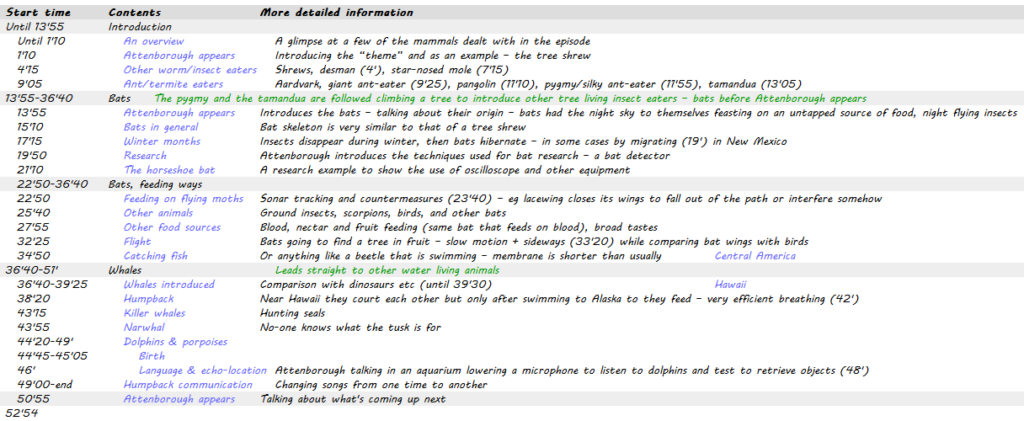
It might be taken from this exact episode that the theme was echolocation since that can accidentally be found in all three of them (some shrews have them). However, the ‘theme’ naturally refers to any recurring characteristics among the mammals.
It should be pointed out that the whale introduction overlaps with the talk about the humpback whale (38’20-39’25) – making the marking between the two dubious.
It is interesting to see how the final animals in each group are used to introduce the next one: before talking about bats Attenborough talks about similar animals that are climbing in trees (a pygmy silky-furred anteater and a tamandua) and when switching from bats to whales he uses a fish eating bat as a link.
Selected material:
Smallest of the anteaters
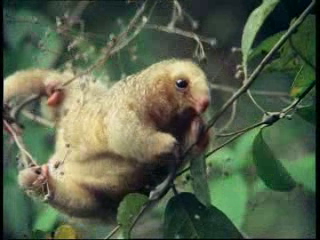
This species, being the smallest, and probably also the least known of the anteaters (or ant-eaters) goes by three names. One of them is the one Attenborough used, it is also known as either pygmy or silky anteater.
The origin of bats (16’05-16’35) from tree shrews.
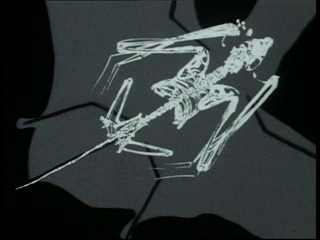
Bat and prey arms race (22’50-24’28) and the prey’s (moth’s) counter measures by jamming the signal (24’40-25′).
A bat catching prey (22’50-23’35)
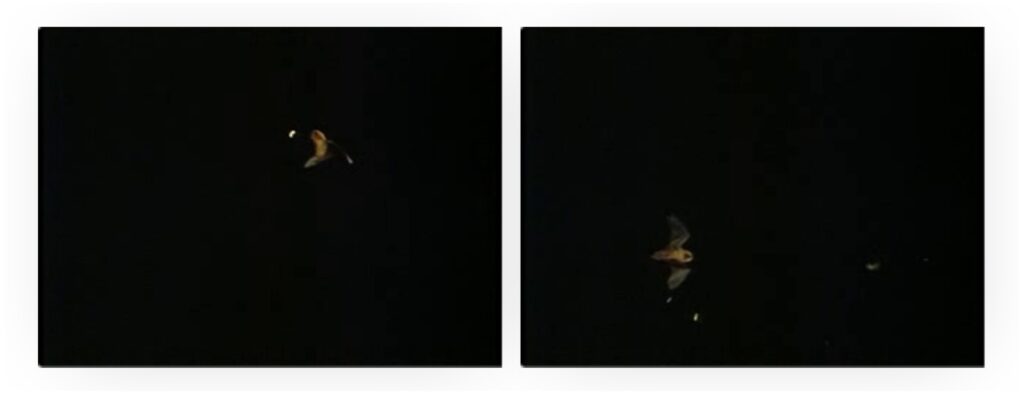
And insects adopting counter measures (23’35-24’30), by listening in on their predators and then dropping from their line of flight.
The insects are the two tiny dots. The one closer to the bat (larger light body) is already below its line of flight, the other is in the direct line but will have dropped below it by the time the bat reaches that point.
The birth of a baby dolphin
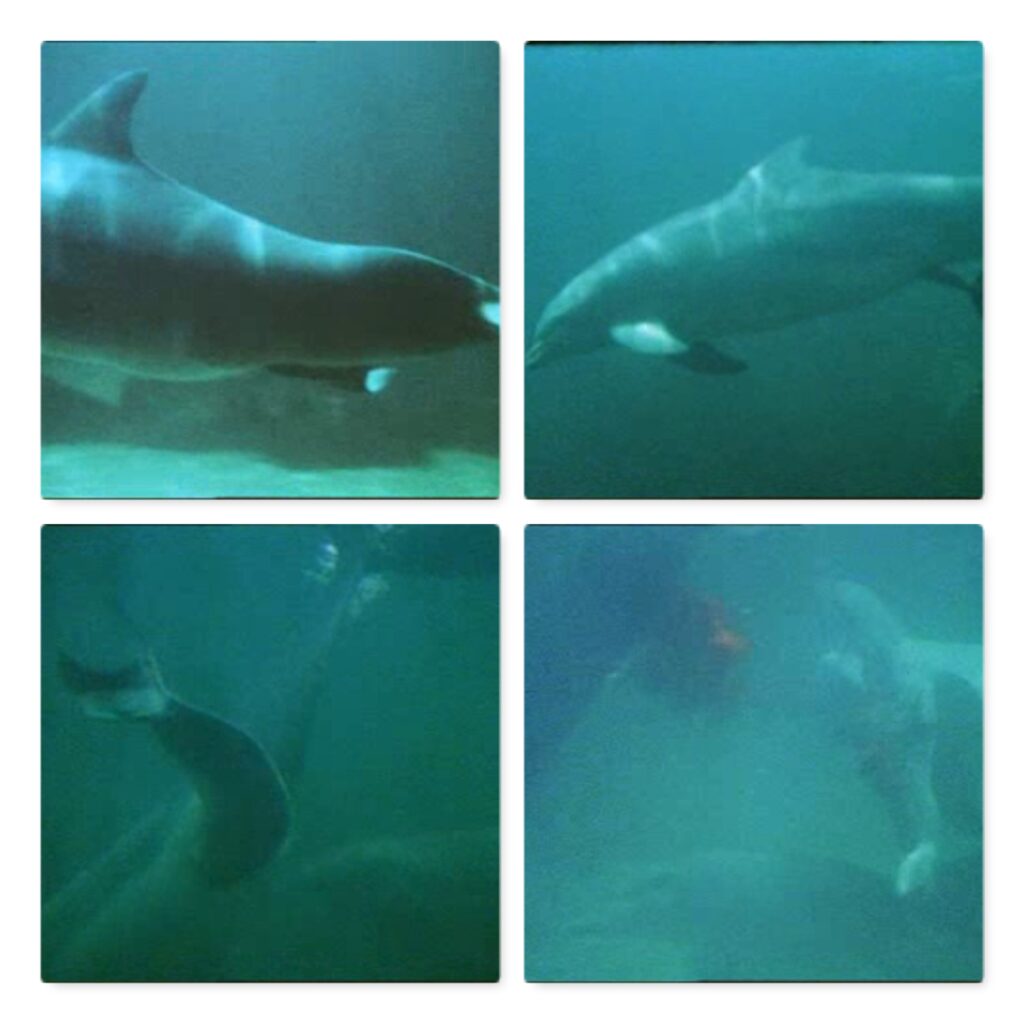
Coming up:
“There are still some variations we haven’t looked at yet: the vegetarians, the leaf-and-grass-eaters, and the carnivores that developed to prey on them. They will have to have a programme of their own.“
Filming locations:
Desman filmed in the Pyrenees (4′)
Looking at a pangolin in Africa (11’45)
Looking at bats in New Mexico (19′)
Swimming with humpback whales near the Hawaii (37’30-39’30 and again later 50′)
Attenborough talking while enjoying dolphins from an aquarium in the States (46′ and 48′)
Filming the pygmy anteater in South America (without Attenborough) (12′)